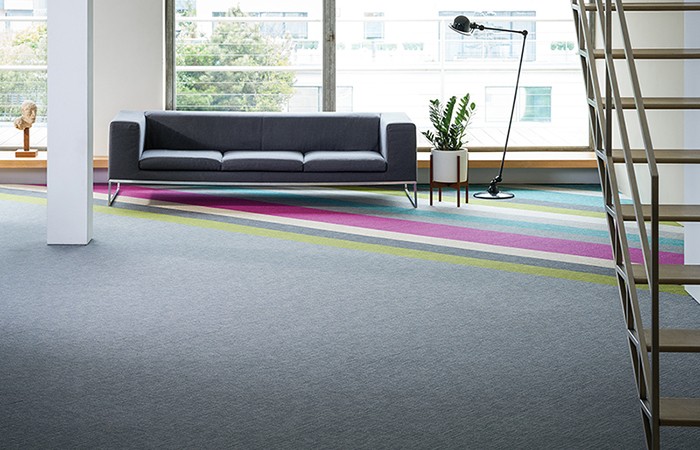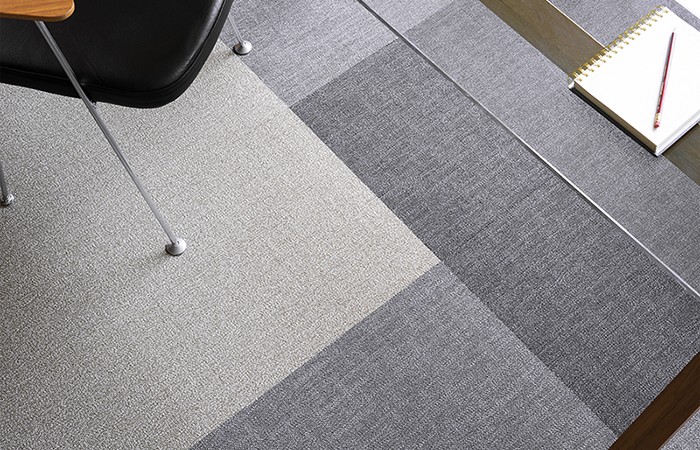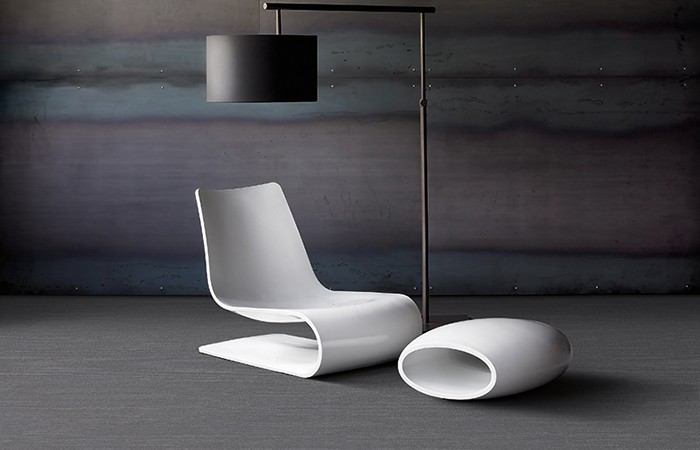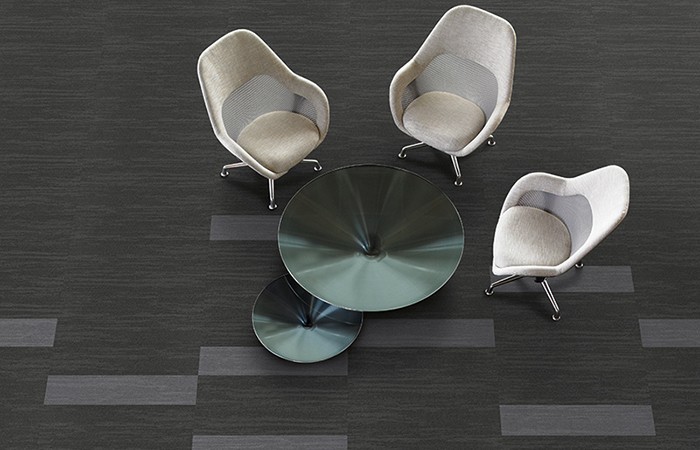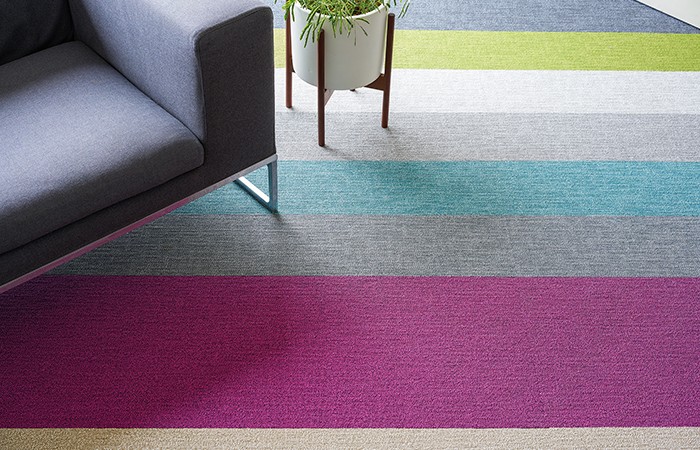Carpet Tiles Regulation
What does a designer needs to know when specifying Carpet Tiles? Samantha Dawe, Marketing Manager EMEA for Shaw Contract, a world-leading designer and manufacturer of flooring solutions, explains.
1. What should a designer know about the difference between domestic and contract specifications?
The differences that need to be considered in terms of domestic and contract specifications fall into a range of categories. There are legal considerations, building regulations, health and safety implications in contract specifications to know about, over and above individual product category requirements.
ISO, is the International Organization for Standardisation and it develops and publishes International Standards. From the outset it is good contract specification practice to seek evidence that manufacturing, for example, is carried out in facilities which hold ISO 9001 Certification or equivalent. This can be key in ensuring consistency as it is defined as the international standard that specifies requirements for a quality management system (QMS). Organisations use the standard to demonstrate the ability to consistently provide products and services that meet customer (both domestic and commercial) and regulatory requirements.
2. What should the designer consider in relation to durability, fit for purpose?
Durability is a broad term and depends on material choice and usage. Manufacturers will have warranties and guarantees which designers can ask about – for example a 10 or 15 commercial warranty.
What is fit for purpose in hospitality, education, healthcare and office spaces will all vary with legislation and building regulation requirements that are specific to each.
The project sector you are working in is a key consideration, followed closely by how will the space be used, and by whom. From our perspective, depending on their construction carpet tiles are for example suitable for light commercial use (BS EN 1307:2014 Overall Use Class 31) through to heavy commercial use (BS EN 1307: 2014 Overall Use Class 33).
Key performance certification set out critical considerations such as wear classification (example mentioned above), fire ratings as well as tests for dimensional stability and so on. The European Standard EN 14041:2004 specifies the health, safety and energy saving requirements for resilient, textile and laminate floor coverings. For carpet tiles it covers tests for reaction to fire, content of pentachlorophenol, formaldehyde emissions, slip resistance, electrical behaviour and thermal conductivity.
3. Are there differences between UK, EU or USA requirements?
As we see specification happening more and more within a global context, we are seeing common elements such as the use of international standards and key performance certifications globally.
Green building standard LEED (Leadership in Energy and Environmental Design), which started life in North America, is gaining traction in EMEA while the UK’s BREEAM (the Building Research Establishment Environmental Assessment Method) is also internationally recognised. The WELL building standard is also gaining recognition around the world and was the first to be focused primarily on ways buildings and everything in them can improve occupant health and wellbeing.
Where we differ is around legislation specific to the UK, individual European countries and the USA, along with country-specific Building Regulations. Building regulations are minimum standards for design, construction and alterations to virtually every building. The UK regulations are developed by government and approved by Parliament, while in Scotland, ministers are responsible for making building standards (equivalent to the building regulations in England). Product testing also varies between UK, European countries and the USA.
4. When communicating with a supplier what should designers be asking?
Designers need to be asking questions of suppliers in order to meet regulations, but can also recognise their role as an influencer in driving the use of healthy building products for example.
Volatile organic compound (VOC) emissions and their measurement are components of many green building schemes and a requirement to provide specifiers with VOC information is now common practice across many product categories. Manufacturers and suppliers are being required to be more transparent; material health is getting the attention it deserves.
Today designers are looking for information from suppliers that is both transparent and easy to access. A good example is mindful MATERIALS (mM) – a free platform with aggregated information on human health and environmental impacts for products from leading manufacturers, vetted by experts passionate about making it easier to make informed product choices.
5. Which requirements are best practice and which are legal requirements?
Legal requirements must be met, and are product conformity or building regulation specific. Designers can request information about acoustic performance of products, and UK Building Standards also look at points such as visual contrast and accessibility, which can be supported through understanding the Light Reflectance Values of individual carpet tiles for instance.
Manufacturers and suppliers are being asked for and legislation brought in around product labelling. A good starting point is CE marking for example. This is a certification mark that indicates conformity with health, safety, and environmental protection standards for products sold within the European Economic Area, however some changes to this may happen post-Brexit.





